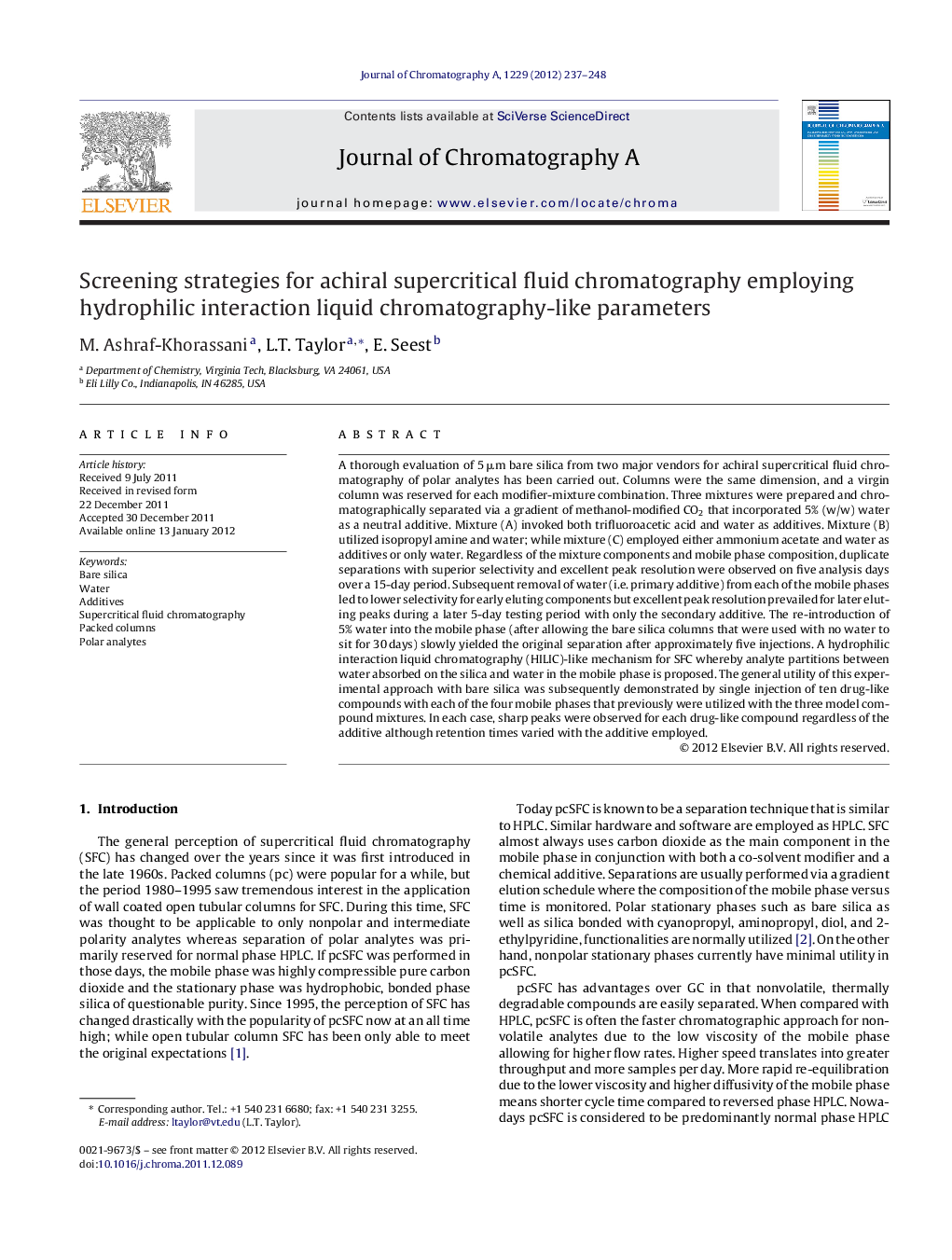| Article ID | Journal | Published Year | Pages | File Type |
|---|---|---|---|---|
| 1203053 | Journal of Chromatography A | 2012 | 12 Pages |
A thorough evaluation of 5 μm bare silica from two major vendors for achiral supercritical fluid chromatography of polar analytes has been carried out. Columns were the same dimension, and a virgin column was reserved for each modifier-mixture combination. Three mixtures were prepared and chromatographically separated via a gradient of methanol-modified CO2 that incorporated 5% (w/w) water as a neutral additive. Mixture (A) invoked both trifluoroacetic acid and water as additives. Mixture (B) utilized isopropyl amine and water; while mixture (C) employed either ammonium acetate and water as additives or only water. Regardless of the mixture components and mobile phase composition, duplicate separations with superior selectivity and excellent peak resolution were observed on five analysis days over a 15-day period. Subsequent removal of water (i.e. primary additive) from each of the mobile phases led to lower selectivity for early eluting components but excellent peak resolution prevailed for later eluting peaks during a later 5-day testing period with only the secondary additive. The re-introduction of 5% water into the mobile phase (after allowing the bare silica columns that were used with no water to sit for 30 days) slowly yielded the original separation after approximately five injections. A hydrophilic interaction liquid chromatography (HILIC)-like mechanism for SFC whereby analyte partitions between water absorbed on the silica and water in the mobile phase is proposed. The general utility of this experimental approach with bare silica was subsequently demonstrated by single injection of ten drug-like compounds with each of the four mobile phases that previously were utilized with the three model compound mixtures. In each case, sharp peaks were observed for each drug-like compound regardless of the additive although retention times varied with the additive employed.
► Bare silica has been evaluated for SFC of polar analytes and 10 drug molecules. ► Introduction of water led to increased selectivity for selected analytes. ► Retention behavior in the presence and absence of water has been compared. ► Drug molecules have been examined with four additive combinations. ► Sharp peaks were observed for 80% of all molecules regardless of the additive.
